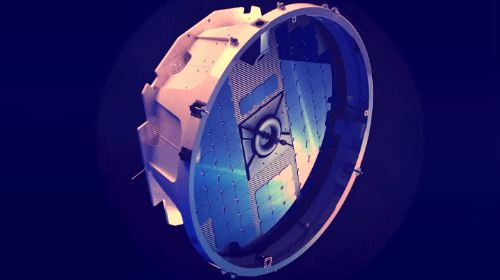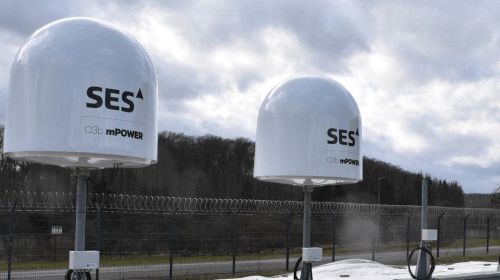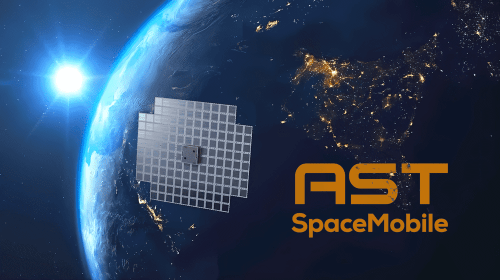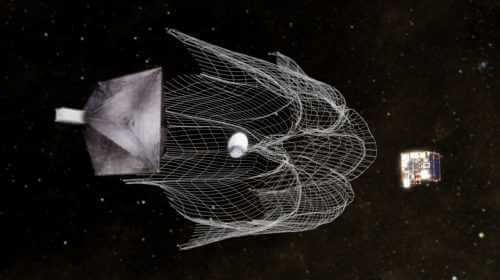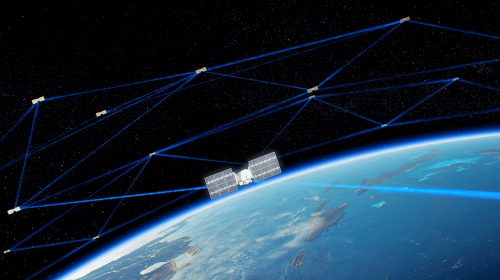Navigating a Mine Field?
Jul 13, 2023
We have tracked the issue of Space Junk in this blog for several years. One of those articles The Science of Space Junk describes the role the atmosphere plays in clearing out space junk. In very low orbits, around 500 km, even though it’s very thin, the atmosphere plays a major role in bringing down satellites and other space debris. Starlink operates at this altitude, as a means of avoiding some of the costs of end-of-mission mitigation techniques, which include fuel and rocket boosters to bring the satellites down. Starlink satellites are expected to come into the atmosphere to eventually burn up starting five or six years after they are launched and deployed. This will occur because of the constant drag of the atmosphere, and because the satellites have a limited amount of fuel with which to make avoidance maneuvers. When the fuel is almost used up, the rest of it pushes the satellite into the atmosphere. As more collision avoidance maneuvers are required, the fuel will be depleted faster. The Starlink satellites will need to be continually replenished.
For some other LEO constellations such as BusinessCom partner OneWeb, which is about twice as high at 1200 km, it can take centuries for satellites to be pulled into the atmosphere, so they must have end-of-mission mitigation capabilities. OneWeb has such capabilities including boosters and sufficient fuel. The OneWeb satellites have also been equipped with Altius Space Machines’ “DogTag” magnetic grappling fixture. Companies such as Astroscale and Altius Space Machines are readying solutions to “grab” satellites and redirect them as needed.
Everything going into space must pass through the region that is largely inhabited by Starlink. What are the implications of the Starlink constellation on space junk at this critical altitude at which they operate? As it turns out the situation does not look good, and the number of satellites is expected to increase from about 4000 in place today, to perhaps 40,000 in the future. A report from Space.com informs us that Starlink had to make 25,000 collision-avoidance maneuvers between Dec 1, 2022, and May 31, 2023. That comes to 137 collision avoidance movements every day! What happens when there are ten times as many satellites? Based on reports filed by SpaceX to the FCC (Federal Communications Commission) the company has made around 50,000 collision avoidance maneuvers since they began launching satellites into orbit in 2019. This steep rise in potential collisions between Starlink satellites and other objects in this region should be a concern to the industry.
The ESA (European Space Agency) in 2019 was forced to move the Aeolus Earth observation satellite out of the way of a Starlink satellite. China filed a complaint in 2021 to the United Nations about having to get its space station out of the way to avoid collision with two Starlink satellites. The Starlink satellites are equipped with autonomous avoidance software, which is supposed to force them to move out of the way if another spacecraft comes close, but apparently other spacecraft are being forced to move to avoid Starlink satellites. As the number of satellites increases, it seems clear that there is a growing threat.
Space Daily in early July 2023 published an article, “A quantitative analysis of the in-orbit collision risks.” They noted that space debris has continued to increase since the first satellite launched in 1957. The ESA estimates there are more than 131,000,000 pieces of useless space junk between 1 millimeter and 10 centimeters currently orbiting Earth, travelling at average speeds of 36,000 kilometers per hour. Anything larger than 1 centimeter is potentially lethal in a collision. They specifically looked at how much space debris is created by anti-satellite tests, which can generate more than 102,000 new pieces of waste larger than 1 centimeter, and which will take thousands of years to drop down to an altitude that burns them up.
Researchers from the University of Malaga who performed the analysis looked at space from an economic point of view. They are concerned that like the oceans, space will end up being overexploited. They note that aside from a non-binding International Treaty of the United Nations, there is no express regulation governing this critical issue. They call it an example of “market failure,” saying the absence of property rights leads to a tendency to misuse the resource and generate ‘negative externalities.’ As we become more dependent on companies operating in space, particularly tech companies, the volume of space debris and the risk of collision will surely continue to escalate.
The study also quantified the effects of a hypothetical war in space, simulating the destruction of 250 satellites. The researchers estimate space debris would increase by 25,500,000 fragments larger than 1 centimeter, which will have a profound effect on the chance of collisions. Currently most space junk is located in between the Starlink and OneWeb altitudes, in the 800 to 900-kilometer range. However, as Starlink continues to congest the lowest orbital space, the danger is almost certain to increase. The objective of the University of Malaga study is to warn of the effects of space debris, particularly for the global economy. The potential problems it may cause Earth are severe. They predict that the ability of humans to use space is likely to disappear for commercial and scientific activities if space debris continues to accumulate at its current rate.
Starlink along with Project Kuiper will fill space below 700 km with tens of thousands of satellites. Others such as Telesat Light Speed and OneWeb at higher altitudes, require far fewer satellites to provide global coverage. To this author, that seems like the smarter way to go.

